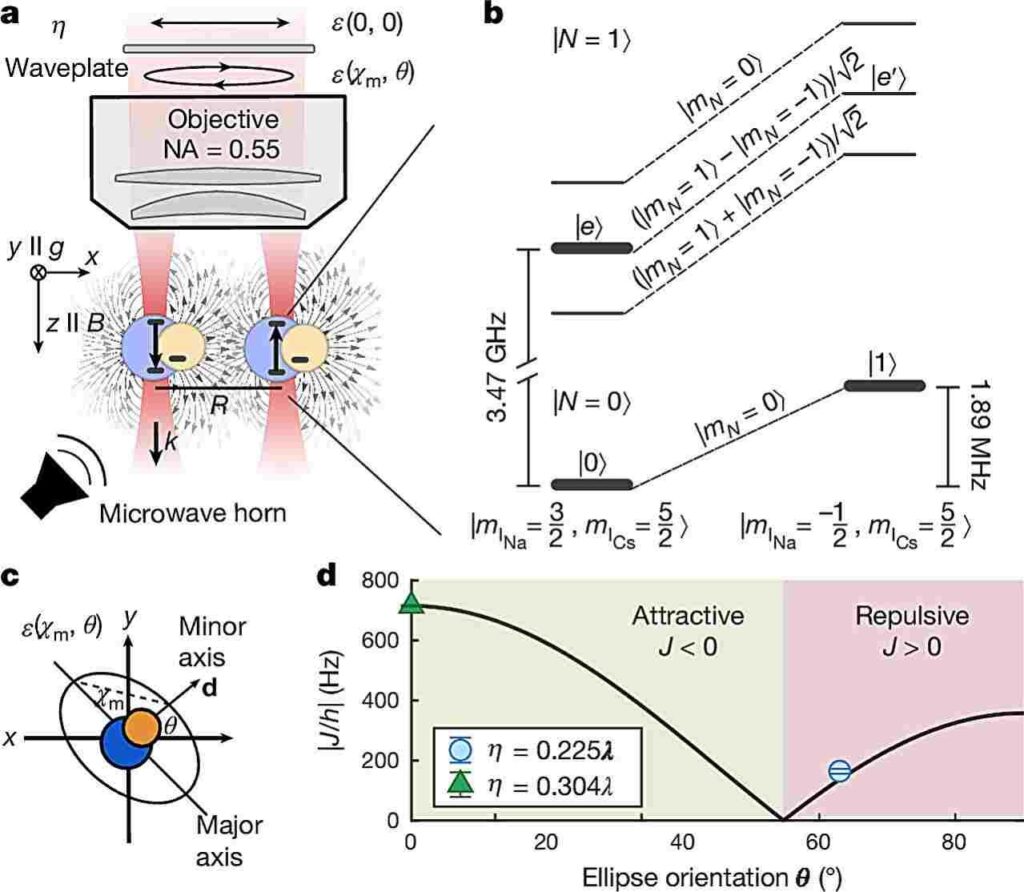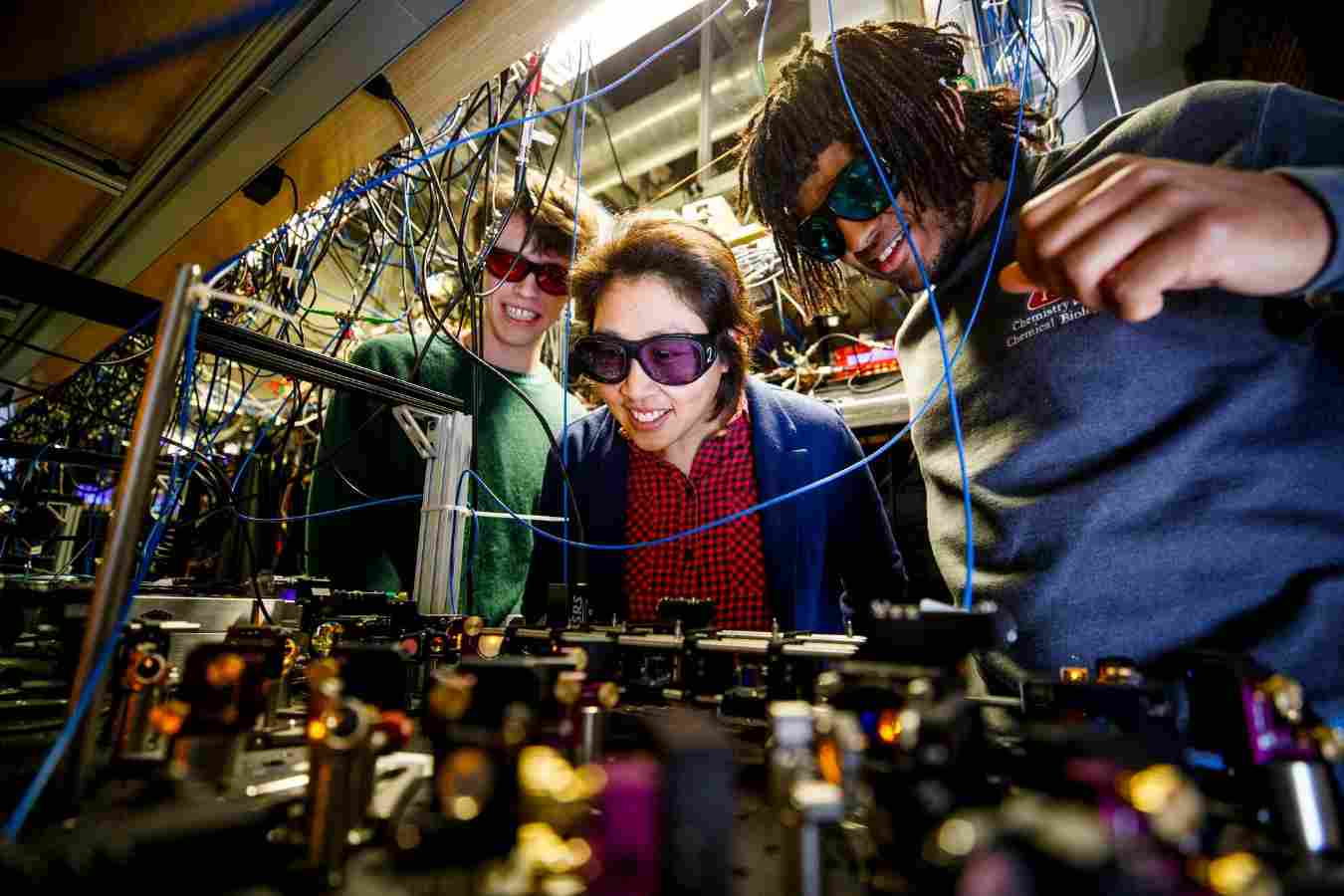Molecules haven’t been used in quantum computing, even though they have the potential to make the ultra-high-speed experimental technology even faster. Their rich internal structures were seen as too complicated, too delicate, too unpredictable to manage, so smaller particles have been used.
But a team of Harvard scientists has succeeded for the first time in trapping molecules to perform quantum operations. This feat was accomplished by using ultra-cold polar molecules as qubits, or the fundamental units of information that power the technology. The findings, recently published in the journal Nature, open new realms of possibility for harnessing the complexity of molecular structures for future applications.
“As a field we have been trying to do this for 20 years,” said senior co-author Kang-Kuen Ni, Theodore William Richards Professor of Chemistry and professor of physics. “And we’ve finally been able to do it.”
Physicists and engineers have been working to develop quantum computing for several decades. The technology, which exploits aspects of quantum mechanics for computation, promises speeds exponentially faster than classical computers, which could enable game-changing advances in fields including medicine, science, and finance.
Dominating the world of quantum computing are experiments with trapped ions, neutral atoms, and superconducting circuits. In these systems, tiny individual particles can be reliably trapped to serve as qubits and form quantum logic gates. The Harvard team’s paper details the far more complicated process involved with using molecules to form an iSWAP gate, a key quantum circuit that creates entanglement—the very property that makes quantum computing so powerful.
The researchers started by trapping sodium-cesium (NaCs) molecules with optical tweezers in a stable and extremely cold environment. The electric dipole-dipole (or positive-negative) interactions between the molecules were then used to perform a quantum operation. By carefully controlling how the molecules rotated with respect to one another, the team managed to entangle two molecules, creating a quantum state known as a two-qubit Bell state with 94 percent accuracy.
Logic gates enable information processing in quantum computers just as they do in traditional computers. But while classical gates manipulate binary bits (0s and 1s), quantum gates operate on qubits—which can achieve what are called superpositions, existing in multiple states simultaneously. That means quantum computers can do things that would be impossible for traditional machines, such as creating entangled states in the first place—or even performing operations in multiple computational states at once.

Quantum gates are also reversible and capable of manipulating qubits with precision while preserving their quantum nature. The iSWAP gate used in this experiment swapped the states of two qubits and applied what is called a phase shift, an essential step in generating entanglement where the states of two qubits become correlated regardless of the distance in between.
“Our work marks a milestone in trapped molecule technology and is the last building block necessary to build a molecular quantum computer,” said co-author and postdoctoral fellow Annie Park. “The unique properties of molecules, such as their rich internal structure, offer many opportunities to advance these technologies.”
Scientists have dreamed since the 1990s of harnessing molecular systems, with their nuclear spins and nuclear magnetic resonance techniques, for quantum computing. A series of early experiments showed encouraging results, but molecules proved generally unstable for use in quantum operations due to their unpredictable movements. That can interfere with coherence, the delicate quantum state necessary for reliable operations.
But trapping molecules in ultra-cold environments, where the molecule’s intricate internal structures can be controlled, helps overcome this hurdle. Once holding these molecules with optical tweezers—with precisely focused lasers for controlling tiny objects—researchers were able to minimize the molecules’ motion and manipulate their quantum states.
Making this breakthrough possible were several members of Ni’s lab including Lewis R.B. Picard, Annie J. Park, Gabriel E. Patenotte, and Samuel Gebretsadkan, as well as physicists with the University of Colorado’s Center for Theory of Quantum Matter.
To evaluate the whole operation, the research team measured the resulting two-qubit Bell state and studied errors caused by any motion that did occur. This left them with ideas for improving the stability and accuracy of their setup in future experiments. Switching between interacting and non-interacting states also enabled researchers to digitize their experiment, providing additional insights.
“There’s a lot of room for innovations and new ideas about how to leverage the advantages of the molecular platform,” Ni said. “I’m excited to see what comes out of this.”
Reference: Lewis R. B. Picard et al, Entanglement and iSWAP gate between molecular qubits, Nature (2024). DOI: 10.1038/s41586-024-08177-3
